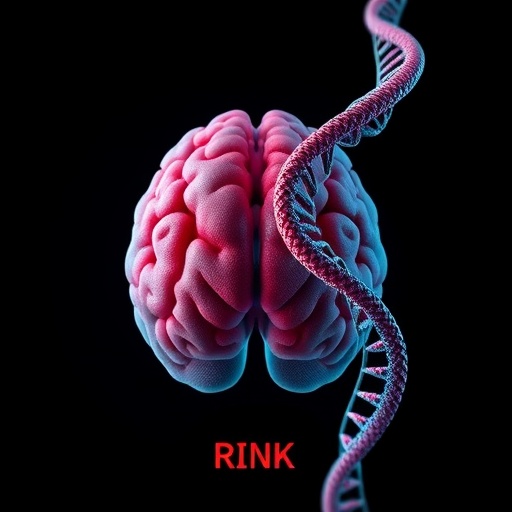
A groundbreaking study from researchers at Brown University and Mass General Brigham illuminates the intricate relationship between adolescent eating habits, circadian rhythms, and body weight, exposing a critical area of exploration in understanding obesity. With obesity rates on the rise among young people, this research underscores the necessity of addressing not only the social and environmental factors contributing to weight gain but also the biological rhythms that dictate when individuals feel hungry and how much they consume.
The findings reveal that adolescents classified as overweight or obese tend to eat more calories later in the day than their peers with healthy weights. This delayed consumption aligns with the adolescent tendency towards eveningness, where teenagers often prefer staying up late, potentially leading to late-night snacking and poor dietary choices. Such behavior can contribute to a cycle of unhealthy eating patterns and weight gain that persists into adulthood, making early interventions critical for lifelong health.
Lead investigator Mary Carskadon emphasizes that the developmental stage of adolescence is pivotal in establishing eating behaviors that can have long-lasting effects. The complex interplay of biological, environmental, and behavioral factors means that targeting adolescent eating patterns through an understanding of sleep and circadian timing may provide new avenues for weight management interventions. By gaining a deeper understanding of how circadian rhythms influence eating, parents and clinicians can better guide teenagers towards healthier habits.
Researchers meticulously designed their study to eliminate variabilities that might skew results, isolating the impact of the circadian system on eating behavior. By placing 51 adolescent participants in a controlled environment with a 28-hour sleep-wake cycle, they achieved a rare opportunity to observe eating patterns free from usual daily cues. Participants underwent assessments of food intake at predetermined times while adhering to a highly regulated menu, allowing researchers to accurately quantify caloric consumption without the pitfalls of self-reported data.
Interestingly, the study revealed that regardless of the group classification based on body mass index, all participants exhibited a peak in food consumption during the late afternoon and evening. However, the overweight and obese adolescents consumed significantly more calories than their healthy-weight counterparts in these evening hours, emphasizing a tangible link between circadian timing and caloric intake. This was observed despite all groups experiencing similar total sleep times across the study’s duration, suggesting that it’s not merely a matter of sleep quantity but rather the timing that holds significance.
Frank Scheer, who serves as the director of the Medical Chronobiology Program at Brigham and Women’s Hospital, notes that the study’s results bridge a critical gap in previous research. While it has long been understood that the circadian system influences hunger cues and metabolic processes, the direct relationship between circadian timing and food consumption in a controlled environment had remained less clear. This revelation highlights how significantly the body’s internal clock can regulate eating patterns, independent of other environmental influences.
The implications of these findings extend well beyond immediate dietary choices; they could pave the way for novel interventions. Incorporating principles of circadian biology into weight management counseling could revolutionize how healthcare providers approach adolescent health. For instance, adjusting the timing of exposure to light and darkness relative to activity can reset biological rhythms and thus impact food intake dynamics. Encouraging increased exposure to bright light during the morning could help shift eating patterns to align more with healthy, daytime practices.
Moreover, the pressing need for further research cannot be understated. Understanding the bidirectional relationship between circadian control of food intake and weight changes is essential. This knowledge could inform personalized dietary interventions aimed at not just modifying when and what youths eat, but also understanding the biological underpinnings that govern their dietary choices throughout their lives. The metabolic and behavioral consequences of these adjustments are still largely unexplored territories ripe for investigation.
In summary, the research findings reveal a multifaceted relationship between circadian rhythms and eating behavior during a crucial developmental window. The shift in understanding emphasizes that interventions around weight management must consider not only dietary guidance but also strategies that recognize the importance of timing in relation to biological processes. By tackling weight issues in adolescents through this lens, we stand on the cusp of paving a healthier future for generations to come.
Ultimately, this research represents a significant stride in understanding the factors that contribute to adolescent obesity. The synergy of circadian biology with dietary habits presents an invaluable perspective for developing evidenced-based interventions. As future studies investigate these interrelationships further, the potential for crafting effective public health strategies grows ever brighter, offering hope in combating the obesity epidemic among our youth.
To that end, this research has garnered support from various institutions, shedding light on the collaborative effort necessary to address this pervasive issue. The implications are clear: for every clock inside a teenager’s biological system, there lies a potential opportunity for a healthier lifestyle, beginning with the understanding and management of their eating rhythms.
Subject of Research: People
Article Title: Independent effects of the human circadian system and sleep/eating cycles on caloric intake in adolescents vary by weight status
News Publication Date: 18-Feb-2025
Web References: 10.1073/pnas.2407907122
References: None available
Image Credits: None available
Keywords: Biological rhythms, Sleep, Weight gain, Adolescents, Childhood obesity, Obesity
Tags: adolescent eating patterns studybiological clock and weight gaincircadian rhythms and obesityeveningness in teenagersimpact of sleep on eating behaviorslate-night snacking in adolescentslong-term effects of adolescent eating behaviorsnutritional interventions for teenagersobesity prevention strategies for youthrelationship between sleep and dietteenagers eating habitsunderstanding adolescent hunger cues





